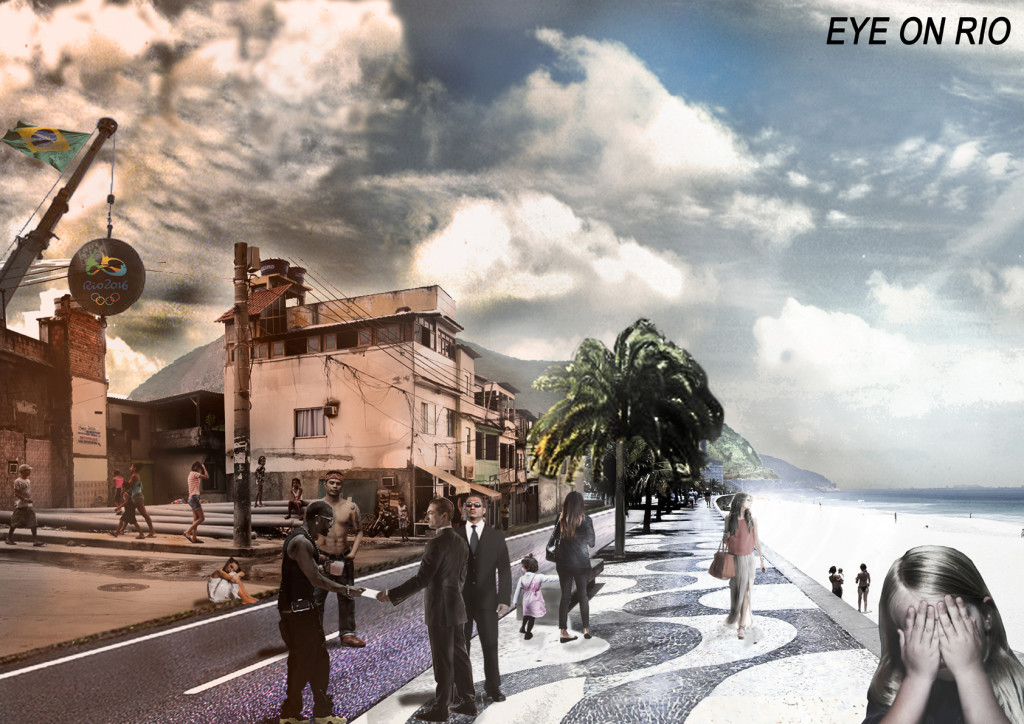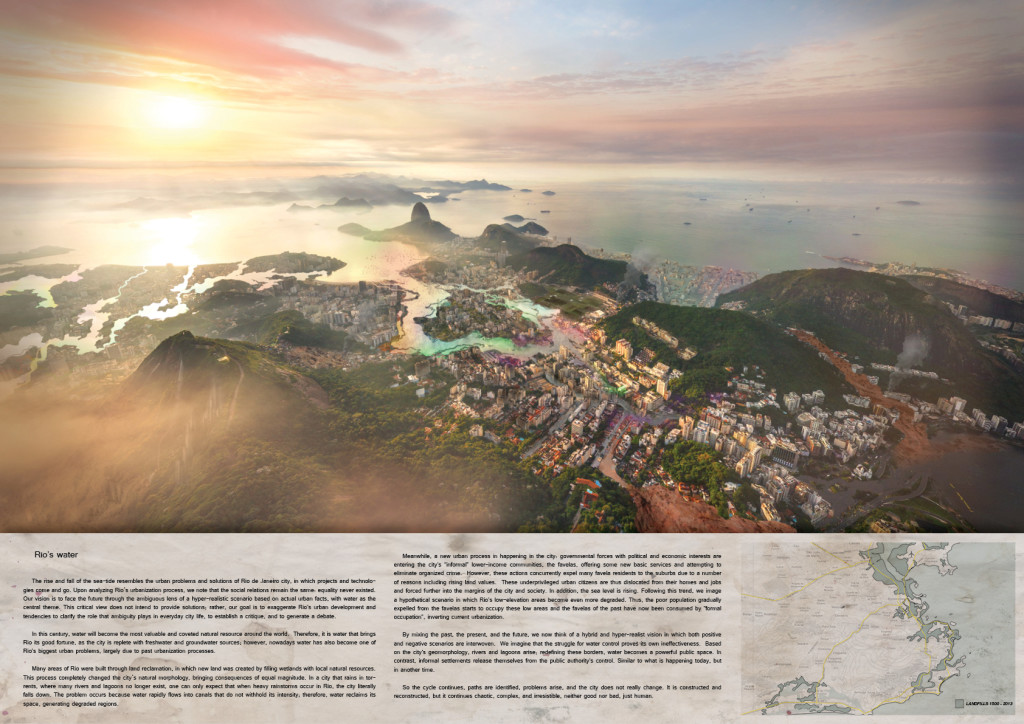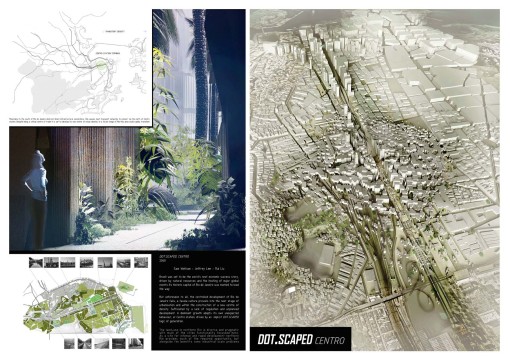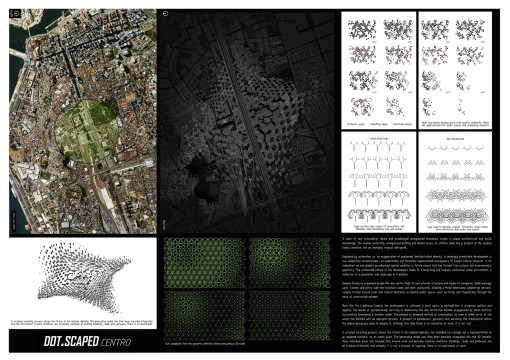Info:
Title: DOT.SCAPED CENTRO - Code: 915e0Contest: Rio de Janeiro / 2013
By: Sam George Welham - Rui Liu - Chun Fatt Lee
Views: 7851 Likes: 4
Votes:
Alejandro Zaera-Polo 11 Jeffrey Inaba 4 Jeroen Koolhaas 7 Hernan Diaz Alonso 10 Cristiano Toraldo di Francia 9 Pedro Rivera 67.8
DOT.SCAPED CENTRO
Brazil was set to be the world’s next economic success story, driven by natural resources and the hosting of major global events, its historic capital of Rio de Janerio was marked to lead the way. But unforeseen to all the controlled development of Rio de Janeiro fails, a favela culture prevails into the next stage of urbanisation and within the construction of a new centre of density, suffocated by a lack of regulation an unplanned development. A dominant growth adopts its own unexpected behaviour at Centro station, driven by an implicit DOT.SCAPED logic of generation. Here a clash of new consumerist ideals and established unregulated economies create a unique architectural and social morphology. The unclear ownership, unregulated building and limited access to utilities seem like a product of the original favela condition, not an emerging tropical metropolis. Explained by authorities as ‘an exaggeration of unplanned, (mis)controlled density’, a seemingly predictable development is now completely uncontrollable; an undesirable and relatively impoverished consequence of favela culture. However, in its realisation we can glimpse an enhanced spatial condition (a future vision) that has formed from cultural and environmental specificity. The unintended nature of the development leads to a surprising and uniquely contextual urban environment, a reflection of a population and landscape in transition. Despite having no organised design the new centre finds its own internal structure and means of navigation. Small passage ways, tunnels and paths lead into miniature voids and open courtyards, allowing a three dimensional pedestrian network. Largely formed around trees and natural obstacles accidental public spaces exist vertically and dramatically through the mass of constructed volumes. Much like the traditional favelas the development is outlawed in most parts, a contradiction of progress, politics and legality. The issues of systematically servicing or demolishing the new centre has become exaggerated by other districts successfully developing a western model. The phased or designed method of urbanisation, as seen in other parts of the world, has battled with an emergent process. A product of parameters, geometry and autonomy the urbanisation mimics the digital processes used to imagine it, although this time there is no simulation at work; it is for real. A scripted swarming process allows the fiction to be realised digitally, not intended as a design but a representation of an imagined scenario, on an urban scale. The generative model has then been manually integrated into the 3D context. Here, individual areas are moulded into, around, over and between existing conditions. Buildings, roads and pathways are all treated differently and uniquely, it is not a process of layering, there is no masterplan at work.
Info:
Title: DOT.SCAPED CENTRO
Time: 4 agosto 2013
Category: Rio de Janeiro
Views: 7851 Likes: 4
Tags: -








